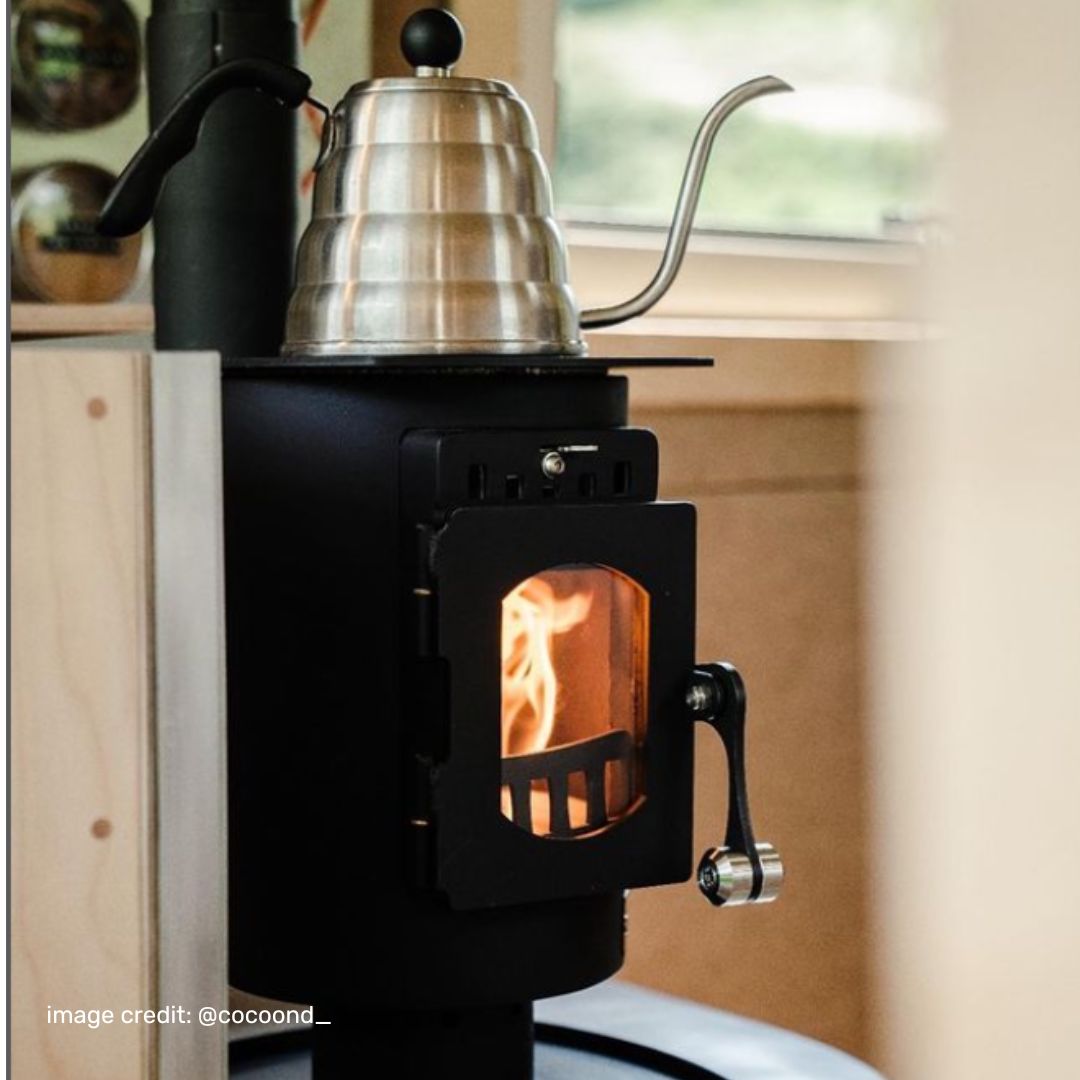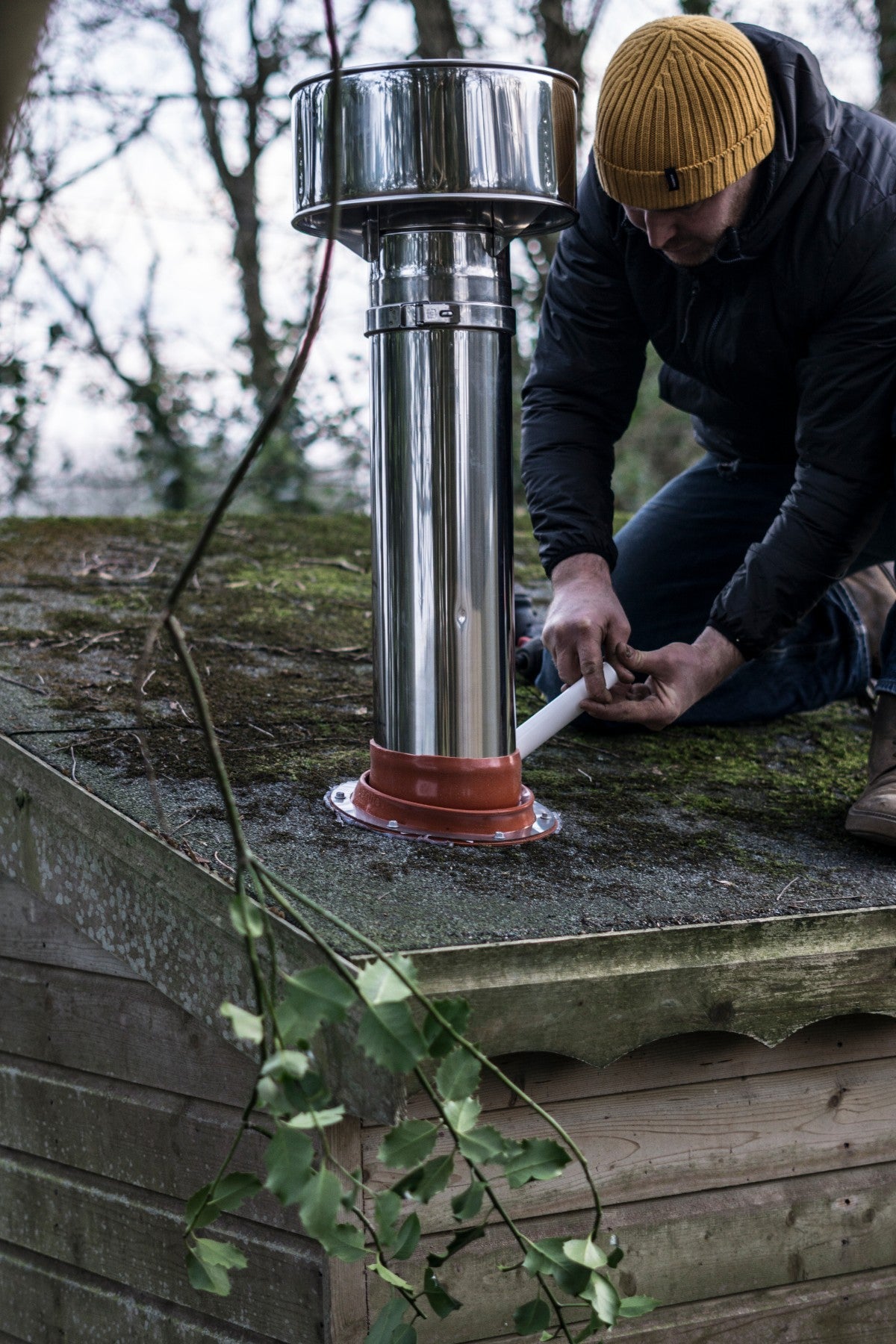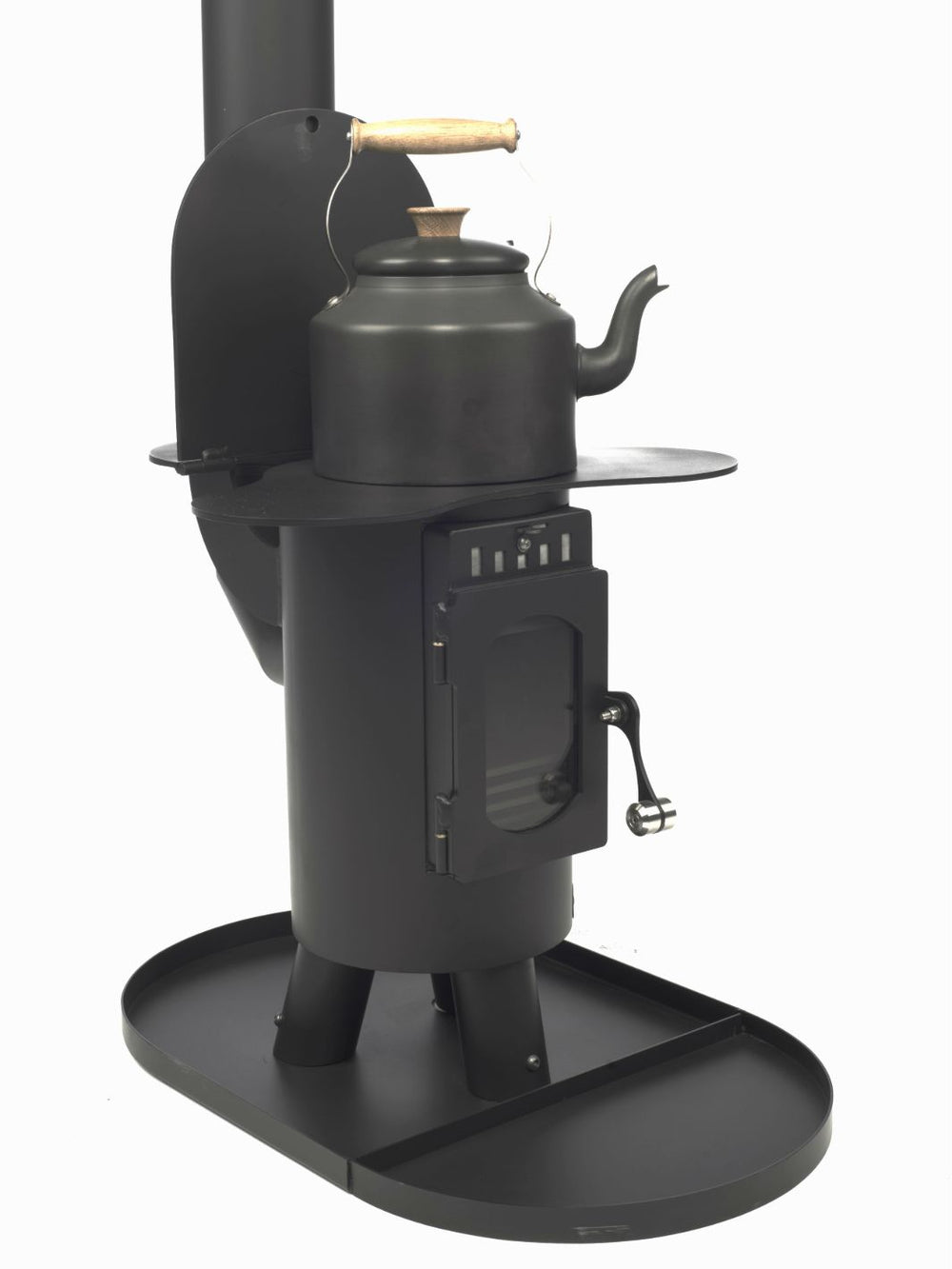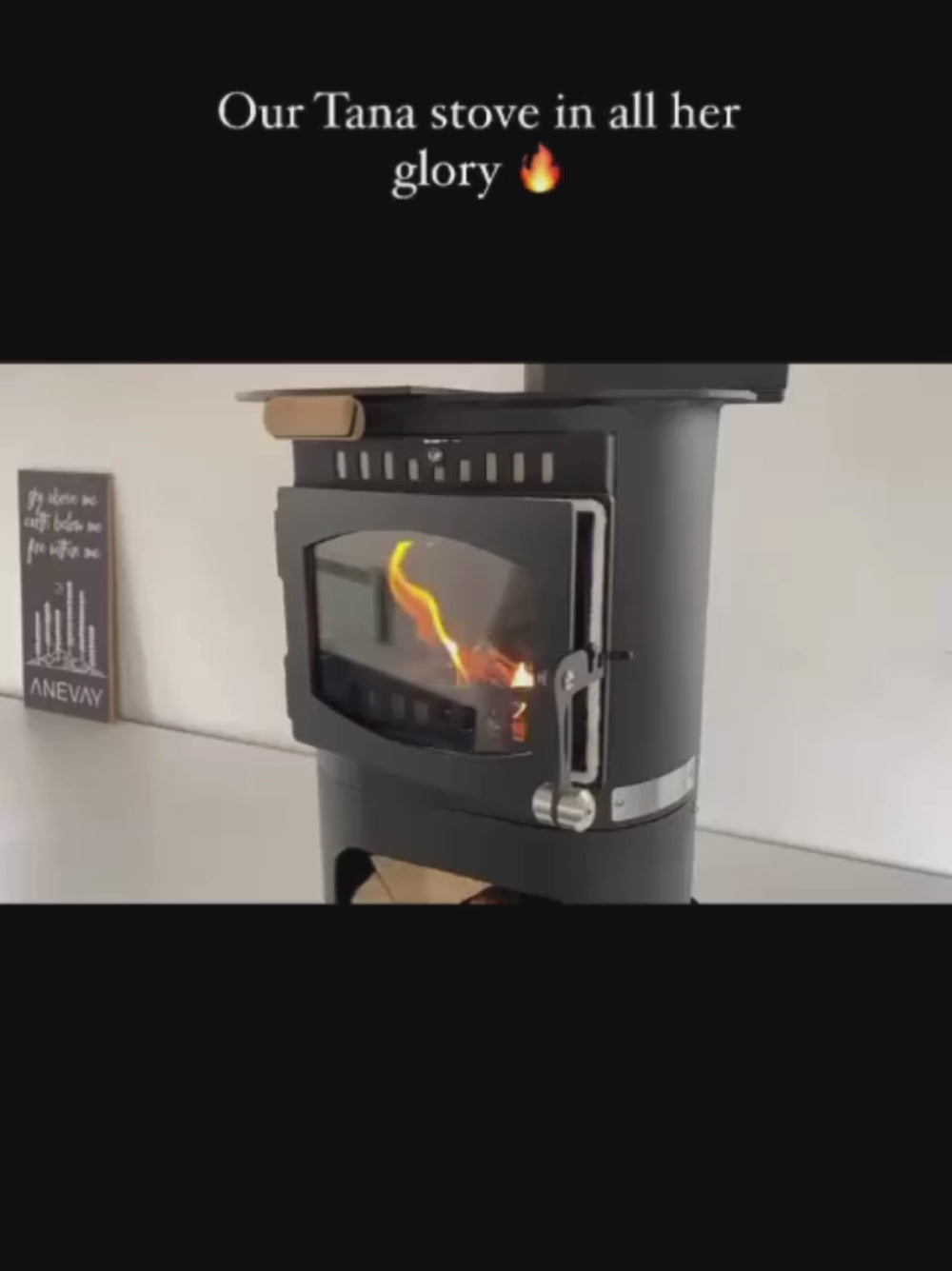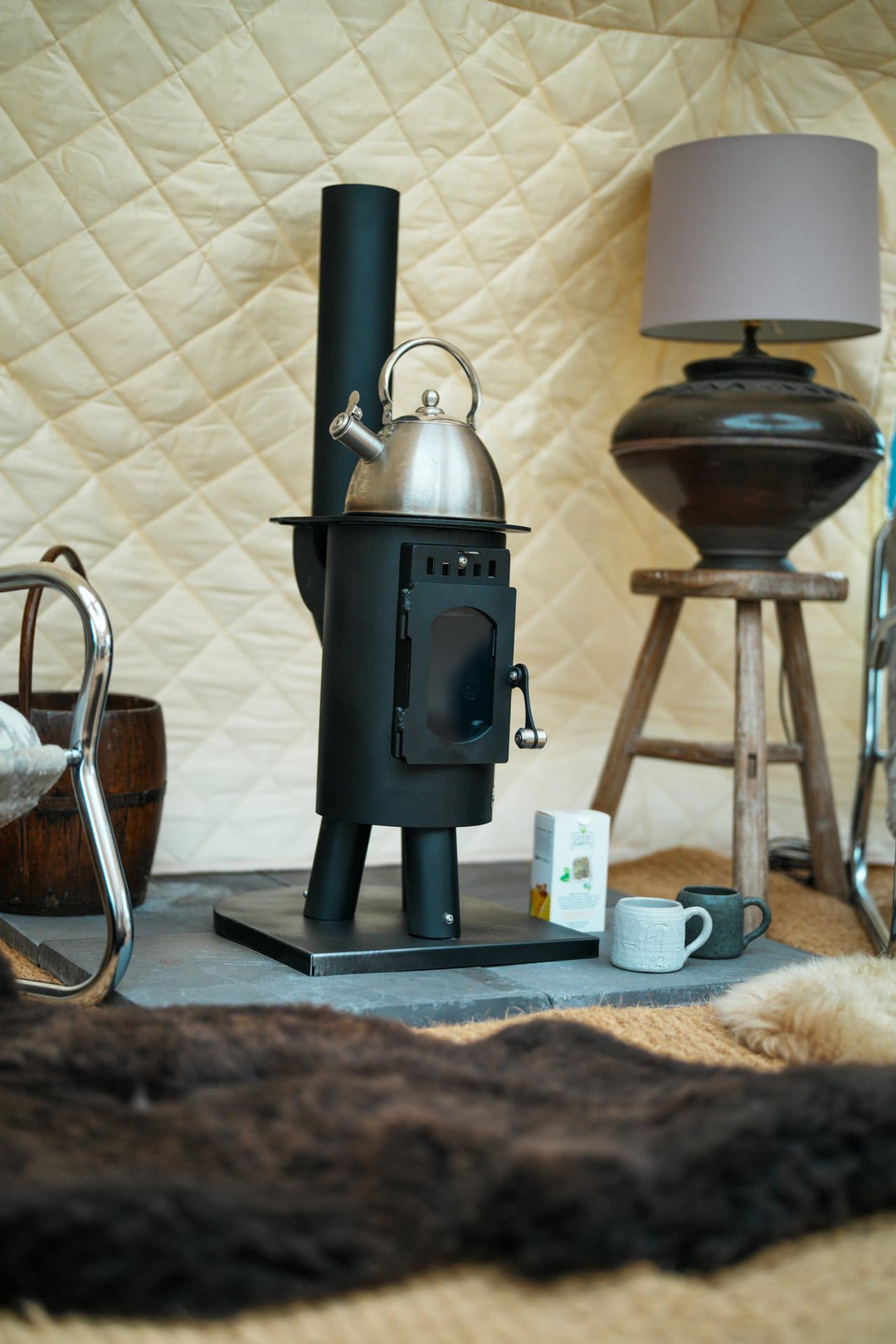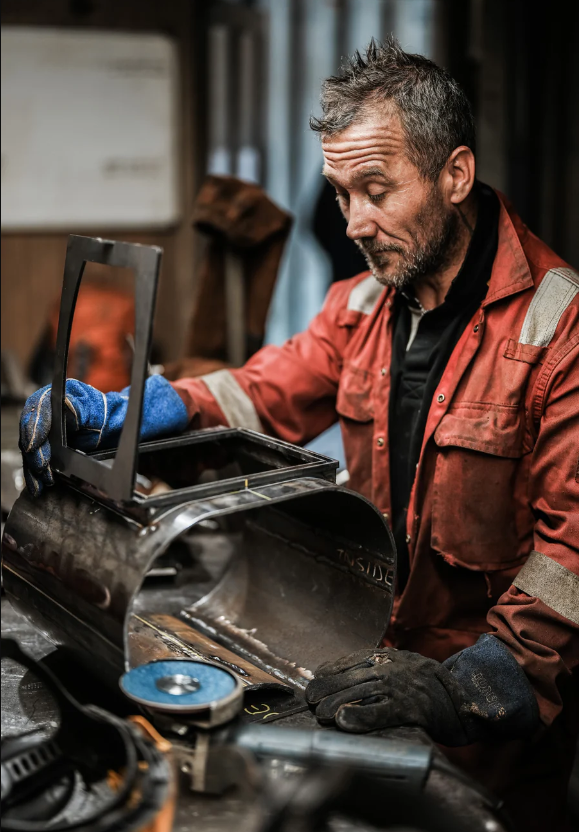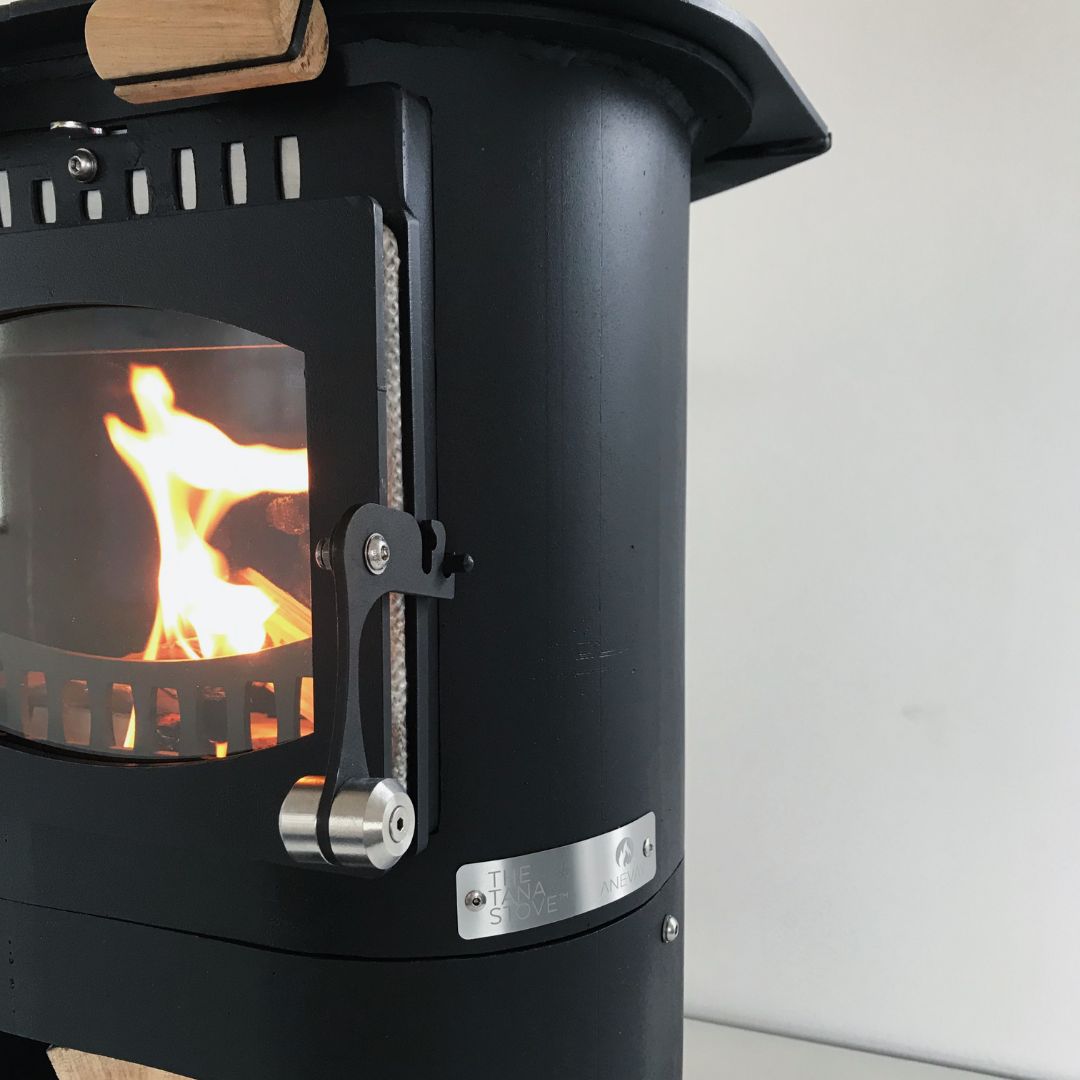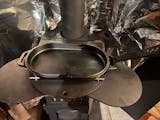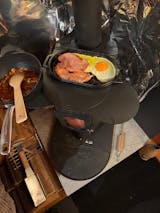Choosing a stove and the right flue to go with it can feel like a bit of a minefield. Luckily, we've tried and tested various flue systems, and have put together a handy guide to help you decide which flue is best for you, based on our experience and the testing we've done with our stoves.

If you're using a Frontier or Frontier Plus, you don't need to worry about using insulated flue: they both come with single-walled flue that comes apart and stores inside the body of the stove as standard. You can use insulated flue with the Frontier Plus, for example if you were leaving it in situ and wanted a better draw - but we'll get to that later. Insulated flue is essential if you're using a woodburning stove that's fitted in a small space or a permanent building.
Insulated vs. Uninsulated
Essentially flue (also known as stove pipe or chimney flue) can be broken down into two categories: insulated and non-insulated. What's the difference? The difference between the two types of flue is just that: one is insulated, and one's not. Insulated flue (also known as double walled or twin wall) is made up of two tubes, an inner tube and an outer tube, with a thick layer of insulation packed between them. The outer tube is usually made of stainless steel, but can also be painted matte black or any other colour to match your stove using high temperature stove paint. Uninsulated flue (also known as single wall or vitreous enamel) is just a single tube, usually about 2mm thick and made of stainless or mild steel. It can be enamelled, have a shiny stainless steel finish or be painted with high temperature paint.
What's the difference? The difference between the two types of flue is just that: one is insulated, and one's not. Insulated flue (also known as double walled or twin wall) is made up of two tubes, an inner tube and an outer tube, with a thick layer of insulation packed between them. The outer tube is usually made of stainless steel, but can also be painted matte black or any other colour to match your stove using high temperature stove paint. Uninsulated flue (also known as single wall or vitreous enamel) is just a single tube, usually about 2mm thick and made of stainless or mild steel. It can be enamelled, have a shiny stainless steel finish or be painted with high temperature paint.
Which stoves should be used with insulated flue?
The Frontier and Frontier Plus don't need to be used with insulated flue if they are for personal use in short-term camping / shed type setups. The Frontier is a highly portable and compact stove designed for outdoor cooking and short camping trips in canvas tents, and it's flue is too narrow to be used with insulated flue. The Frontier Plus can be fitted with insulated flue, for example if it was fitted in a small space like a shed, but as it's really designed to be portable and used in tents and tipis, single-walled flue is more than sufficient.
The Frontier Plus with single-walled flue (included)
The Shepherd, Traveller, Fintan and Tana should be used with insulated flue for best results, especially if they're being permanently fitted in a small space. Single-walled flue can be used to connect the stoves to insulated flue exiting through the roof or wall.
The Fintan Stove with 4" Insulated Flue Kit
Why use insulated flue?
To explain the point of insulated flue, it's important to first understand draw. Draw is the updraft force that sucks smoke and gases out of your stove body, where the fire is, up the flue and out of your tent or your house. This updraft is created when the flue gases reach temperatures of between 150°C and 500°C. You might have experienced this when lighting a cold wood burner: if you load up the fire with too much wood before the flue has had a chance to heat up, you'll get lots of smoke billowing out into the room. This is because the flue gases haven't reached a hot enough temperature to create draw, and so aren't pulling any of the smoke up the chimney. This issue is most often the culprit if you're getting a smoky backdraught when you're using a narrow flue, like the Frontier Stove, so if you encounter this problem always make sure to give the flue a chance to heat up before loading up the fire.
The function of insulated flue is to keep the flue temperature up, ensuring a good, continuous draw. Single-walled flue will cool fairly quickly once the fire begins to die down, which can result in a backdraught, but insulated flue will hold its temperature for much longer.
When should insulated flue be used?
Insulated flue should always be used when installing a stove in a permanent building, or in applications where the stove will be left in place or used continuously, especially if it's going to be left unattended. This prevents the flue from losing heat and allowing smoke or fumes to issue back into the room. It also protects your combustible surfaces from the flue's heat.
Building regulations require a minimum distance of three and a half times the flue diameter to any combustible materials (usually a wall) when using singe wall flue, whereas this distance can be reduced to as little as 50-60mm when using insulated flue and a heat shield. It's much safer to fit insulated flue through walls or a ceiling, as there's very little heat on the outside of the flue; single walled flue can still be very hot where it exits through the roof, and this can pose a risk to combustibles when left in place or unattended. Although our silicone flashing kits are heatproof, they will last longer when used with insulated flue, as they're exposed to a lower temperature over a prolonged period of time. You can use single walled flue to connect your stove to an insulated flue system, up to 150mm from the ceiling. This has a few advantages: it allows more heat to be radiated inside the room, and, when using with stove that has a lid, allows the lid to be lifted. This is why we recommend starting with single wall flue from the Shepherd, Traveller, Fintan, and Tana Stoves.
Small spaces and glamping accommodation
If you're fitting a stove in a small space like a van, shed, tipi, or if you're installing a stove in a canvas tent that'll be rented out as glamping accommodation, it's essential to use insulated flue. In a small space, insulated flue reduces the distance that you need between the flue and combustibles. It also prevents anyone from accidentally touching the hot flue when moving around. In a tipi or tent you're renting out as glamping accommodation, using insulated flue makes operating the stove much more user-friendly, as it maintains a good draw, makes the stoves easier to light and, if used with an anti-wind cowl, prevents backdraught because of strong gusts of wind.

In a nutshell, insulated flue:
Protects your combustible surfaces like walls and ceiling, especially in small spaces
Keeps the flue heat in to retain a good draw
Prolongs the life of your flashing kit Is more rust resistant on the outside of your structure where it'll be exposed to the elements
If using our 4" Insulated flue kit, gives you peace of mind for a safe installation
Can make using the stove more user-friendly by maintaining the draw - great if you've got guests using the stove
Is better suited to windy conditions, as an anti-wind cowl can be used
Do I always need to use insulated flue?
There are some situations where you don't need to use insulated flue: the Frontier and Frontier Plus both come with single-walled as standard. This is partly because it's much more lightweight and portable than insulated, but also because when used outdoors in a canvas tent or tipi, the stoves will usually only be used for a short time and will always be attended. Uninsulated or single-walled flue is a more convenient option for a portable stove. We designed our Frontier and Frontier Plus stoves to run efficiently using the single-walled flue.
A good rule of thumb is: if it's a portable stove, single-walled flue will do the job nicely. If you're fitting the stove in a permanent setting, especially if it's a permanent building or a small space, then it's best to use insulated flue.
